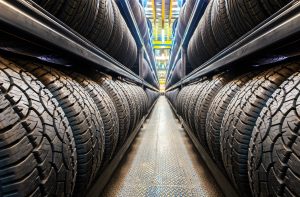Healthy tires allow you to drive safely, but they will wear down as time passes. Surface friction damage, weather, and time can all cause tire damage. As your Nissan dealership in Vancouver, WA,, we’d like to advise you on a few signs that your tires are wearing out.
Looking for New Tires? Visit Your Nissan Dealership in Vancouver, WA
Cupped Tires
Cupping is an unusual wear pattern where the tire appears to have been gouged at regular intervals. This type of wear is caused by worn shocks or a damaged suspension. Either of these issues causes our Nissan to bounce slightly as it moves, and this bouncing action creates the wear pattern. Our technicians will need to examine the tires to determine the extent of the damage.
If the damage is significant, the tread will have been weakened, which makes it more likely that you’ll suffer a puncture or blowout. In this situation, we’d advise replacing your tires to prevent potential safety issues. We’ll also examine your suspension and shock absorbers to determine the cause of the problem. Once it’s identified, we’ll make the necessary repairs.
Bald Tires
Bald tires look almost smooth, and they’re very dangerous to drive on. A bald tire has lost all its tread, and the tread enables a tire to gain a firm grip on the surface. This grip reduces braking distance and speeds up the braking process, as the tread produces friction against the surface. If you have one or more bald tires, you’ll notice that steering and driving become more difficult.
The reduced surface grip from bald tires is even more dangerous if driving in wet or muddy conditions. Bald tires can easily lose contact with the surface as liquid accumulates between the tire and the surface, and this can cause your car to skid. In addition, bald tires are more susceptible to leaks or punctures. We can easily replace any bald tires in minutes and rebalance them so you can drive safely again.
Overinflated Tires
All your tires have a specific pressure to ensure safety and driving efficiency. This pressure is determined for each model by Nissan’s designers and engineers. The correct tire pressure is shown in your car manual and on a metal plate in the inside door jamb of the front passenger door. Most drivers think only underinflated tires are a problem, but overinflated tires have their issues.
If the pressure in a tire is too high, the tire rubber is stretched slightly thinner. When you’re driving, the air inside the tires heats up, and this increases tire pressure. Overinflated tires can blow out more easily, and this can cause an accident.
If your tires look worn or damaged, visit us today at Alan Webb Nissan in Vancouver, WA.




